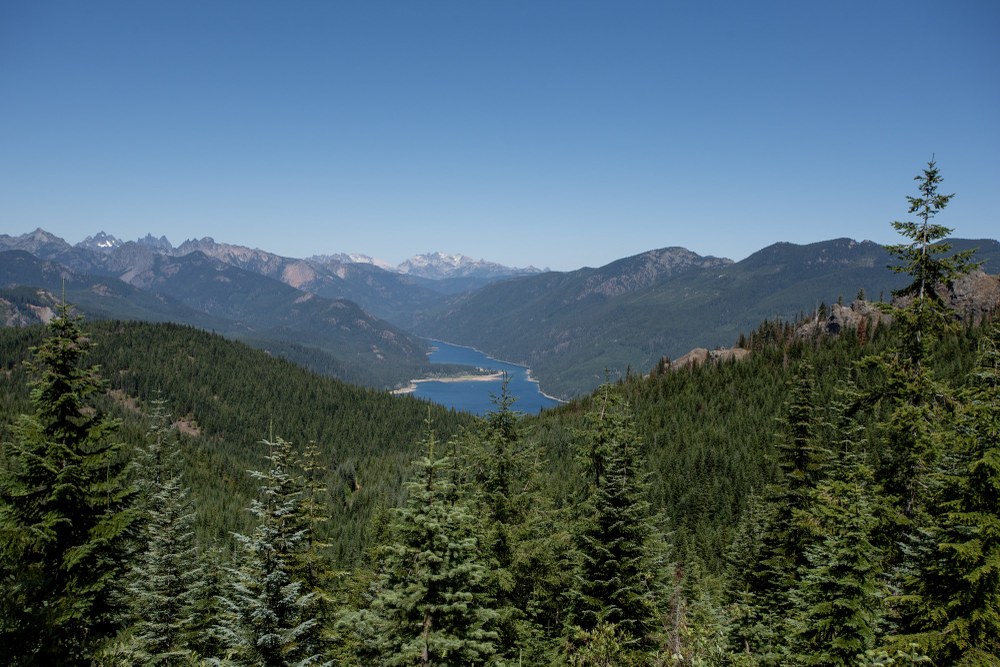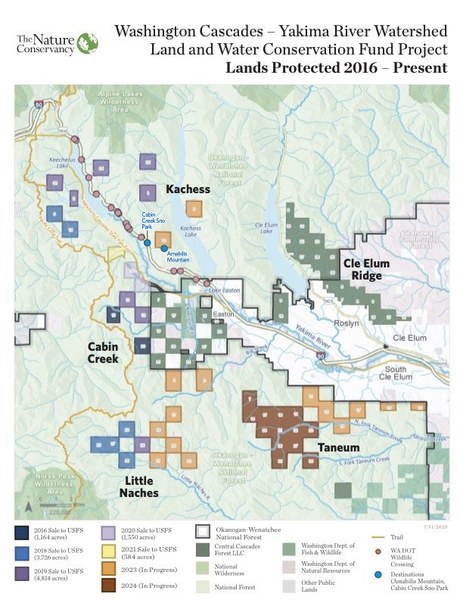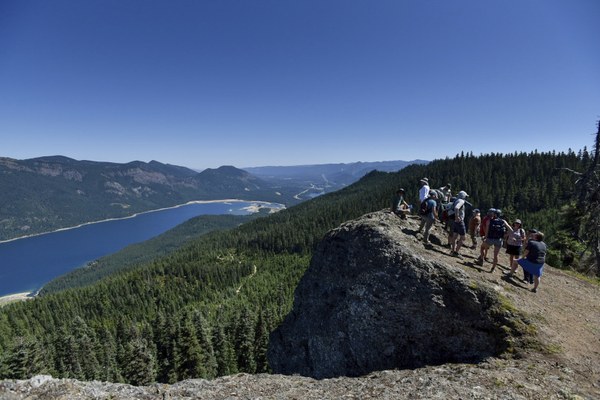
Earlier this month, we celebrated the three-year anniversary of the passage of the Great American Outdoors Act (GAOA). GAOA is already making a difference on the ground for Washington’s public lands and the transformational recreation opportunities they provide. In fact, GAOA funding is powering current public lands projects in Washington like the Stevens Canyon Road improvements in Mount Rainier National Park, as well as several trail improvements in the Mountains to Sound Greenway.
This historic win included one of our longtime conservation priorities: full and permanent funding for the Land and Water Conservation Fund (LWCF) - America's most important program to conserve irreplaceable lands and improve outdoor recreation opportunities. Thanks to the GAOA, we’ve essentially doubled the amount of mandatory funding LWCF receives from Congress each year. In the wake of a bolstered Land and Water Conservation Fund, advocates set their sights on the next big play to conserve Washington’s iconic lands and waters.
Leveraging LWCF to Conserve the Upper Yakima Basin
Last year, The Mountaineers joined conservation and recreation partners to ask Congress and the Forest Service to support The Nature Conservancy’s request for additional funding for the Washington Cascades Yakima River Watershed Land and Water Conservation Fund (LWCF) project.
Just east of Snoqualmie Pass and within the Mountains to Sound Greenway, the Upper Yakima River Basin in Kittitas County encompasses green valleys and high peaks, challenging hiking and biking trails, and cool, clear streams which are the headwaters of the Yakima River. Due to a legacy of development in the central Cascades, large parcels of private forest land are interspersed in checkerboard fashion among swaths of public lands, creating the need to reconnect these landscapes for wildlife, environmental health, and recreation. The LWCF project, the last major checkerboard project in the I-90 corridor, aims to protect nearly 30,000 acres of private forest lands in Kittitas County.
We are excited to share that the Washington Cascades project is fully funded in the President’s fiscal year 2024 budget and is the top-ranked project on the Forest Service’s LWCF project list.
Thanks to funding from LWCF, the project will soon reach the milestone of protecting 20,000 acres of private checkerboard lands in the Okanogan-Wenatchee National Forest. Protecting and reconnecting this area through the GAOA is the latest success story of how this landmark law is positively impacting Washington’s public lands, building on successful conservation efforts dating back to the 1990s. Integrating these lands into the Okanogan-Wenatchee National Forest will have lasting benefits for recreation and watershed restoration and allow for consistent landscape management.
 Washington Cascades forest land protected through the Land and Water Conservation Fund 2016 – present. Image courtesy of The Nature Conservancy.
Washington Cascades forest land protected through the Land and Water Conservation Fund 2016 – present. Image courtesy of The Nature Conservancy.
Protecting Recreation at Amabilis Mountain
Mountaineers conservation staff recently joined 60 community members and project partners and Rep. Kim Schrier (WA-08) in Kittitas County to celebrate this important milestone for the Washington Cascades Land and Water Conservation Fund project. After the celebration, a small group hiked to the top of Amabilis Mountain in the Cabin Creek area near Lake Kachess. The top of the mountain is slated for acquisition and protection as a part of the project. Amabilis Mountain is a popular area for winter recreation and the backdrop for Mountaineers cross-country skiing, snowshoeing, and scrambling trips. Once it becomes part of the national forest later this year, public access will be protected forever.

Project partners and stakeholders hike Amabilis Mountain. Photo by Hannah Letinich. Courtesy of The Nature Conservancy.
We’re grateful for The Nature Conservancy’s leadership on this effort, and for the numerous community partners and individuals that have worked tirelessly to conserve the upper Yakima Basin. The project funding won’t be official until Congress passes a fiscal year 2024 appropriations bill.
We’ll keep you apprised of future opportunities to urge lawmakers to fund the final piece of this important conservation project, as well as continue to share how the Great American Outdoors Act is helping conserve and maintain Washington’s special outdoor places.
 The Mountaineers
The Mountaineers